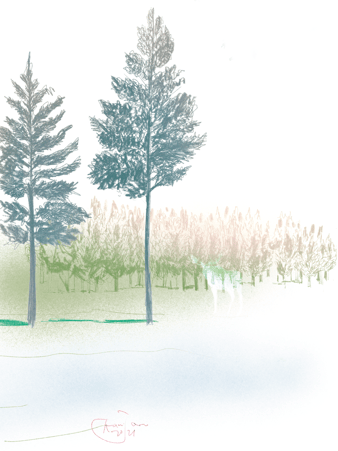Trees are our biggest allies in the fight against climate change.
There is no better technology than that provided by Nature to absorb carbon emissions and contain the increase in global temperature below the threshold of 2 degrees Celsius, as established by the Paris Agreement, and more recently, by the United Nations Conference on Climate Change of 2021 (Cop26).
Every year, over three million people worldwide die from the devastating effects of pollution produced by the use of concrete in urban areas, which causes, in turn, an increase in particulate matter in the air from ever-intensifying vehicular traffic, domestic heating and industry.
Urban tree planting has multiple advantages:
it cools the surrounding areas, preventing the formation of heat islands, and consequently reduces energy consumption and harmful emissions from air conditioning systems.
shaded areas are a valuable asset for citizens and animals that frequent the city
the capacity of water absorption by the soil reduces the risk of hydrogeological disruption, mitigating the impact of rain.
"Cities account for less than 2% of surface land, and yet this 2% produces 80% of the carbon dioxide, waste and the consumption of the planet’s resources."
Stefano Mancuso, Director of the International Laboratory of Plant Neurobiology
But planting trees is not enough: it must be done with guiding principles. The risk of the damage exceeding the benefits is just around the corner.
“It is important to choose the right species of trees, possibly native, and plant a variety of them in order to grow a healthy forest that resists climatic pressures and performs its ecosystem functions as best as it can to benefit the environment and society.”
Giorgio Vacchiano, Researcher in Forest Management and Planning at the University of Milan
The protection of local biodiversity with the correct choice of indigenous tree species suitable for certain types of soil and climates is fundamental: the physiology of an urban forest comprises a complex ecosystem and is not simply determined by a “lump sum of trees.”
A scientific approach is crucial to augmenting the natural technology of trees, a model that can compete with machine technology. We will start with three pilot projects conducted with a scientific method in which we will measure all the ecosystem services that trees bring to those who live in the city, in addition to the expected absorption of CO2. Scientific evidence will make the model competitive and replicable in the world.
A cultural approach will be indispensable and will involve the new generations through schools and the citizens of the cities and districts that are involved in the projects. This operation of awareness is useful for the constant nurturing of the trees after their planting.
Planting a tree is a simple and ancient gesture, which will make the future possible.
The three projects are currently in the process of being defined, with plans to run them in three different European countries, all of which will have a 10-year duration and a total spending budget estimated at €20,000,000.
This is Reintegration Economy
Everything you read on this page is made possible by Reintegration Economy. A new economic model: it provides that the ownership and 100% of the revenues of a company* do not just benefit the few but are made available to all living species and their common home, the Planet Earth.
This company is Almo Nature, fully owned by Fondazione Capellino.
